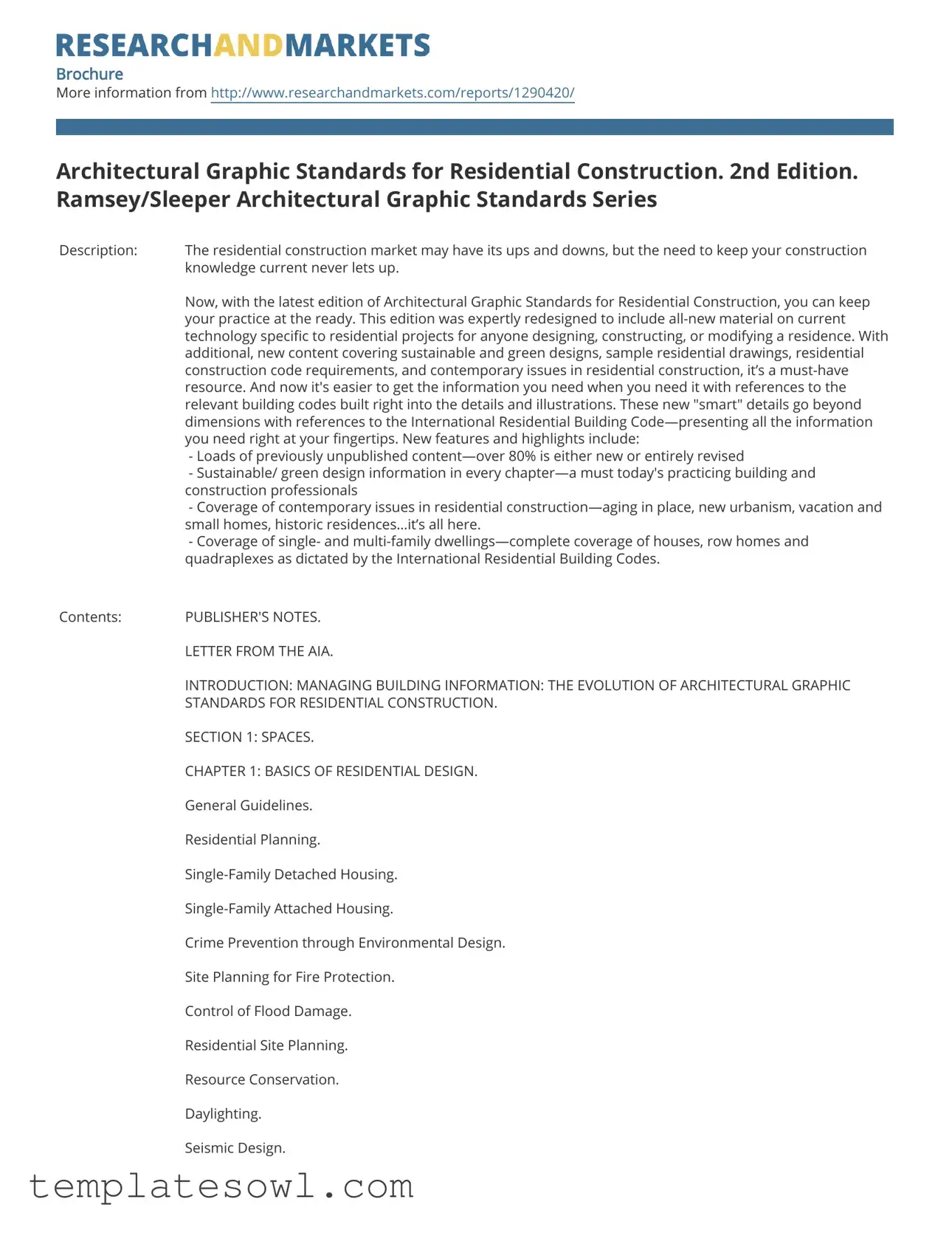What is the Architectural Graphic Standards form?
The Architectural Graphic Standards form is a comprehensive resource designed for the residential construction industry. It provides valuable guidelines and details necessary for designing, constructing, and modifying residential buildings. The latest edition features a wealth of newly published content that focuses on contemporary practices, sustainable designs, and applicable building codes, making it an essential tool for professionals in the field.
Who should use the Architectural Graphic Standards?
This resource is ideal for architects, builders, contractors, and construction professionals who want to enhance their knowledge of residential design and construction. It is also beneficial for students and educators in architecture and construction management programs. Anyone involved in the planning or execution of residential projects will find this guide invaluable.
What type of content can I expect in this edition?
This edition covers a variety of topics, including residential design basics, space planning, building elements, materials, and contemporary issues such as sustainable practices and aging in place. It includes a detailed analysis of both single-family and multi-family dwellings, ensuring a broad spectrum of coverage relevant to modern construction practices.
How does this resource address sustainable design?
Each chapter includes specific information on sustainable and green design practices. Topics cover energy efficiency, resource conservation, and eco-friendly materials, helping professionals incorporate sustainable strategies in their projects. The aim is to promote environmentally responsible construction that meets today’s societal demands.
Are there practical illustrations or examples included?
Yes, the Architectural Graphic Standards form includes numerous illustrations and sample residential drawings that visualize the concepts discussed. These visual aids help clarify complex ideas and serve as practical references for users when designing or reviewing residential plans.
What types of projects does this resource cover?
The guide encompasses a range of residential projects, including single-family homes, row houses, and quadraplexes. It provides insights into site planning, construction codes, and relevant regulations for both detached and attached dwelling units.
Can I find information on building codes within the document?
Absolutely! The Architectural Graphic Standards are enriched with direct references to the International Residential Building Code. This integration allows users to access crucial code requirements alongside practical design details, ensuring compliance and enhancing the quality of residential construction.
How can I order the Architectural Graphic Standards form?
Ordering is straightforward. You can purchase the form online at the official website, send a fax, or order by post using a printed form. Detailed instructions for each method are available on the website to assist customers with their preferred ordering process.
Is this resource updated regularly?
The Architectural Graphic Standards is periodically updated to reflect the latest practices and technological advancements in residential construction. This ensures that practitioners have access to relevant and current information to support their work.
Are there additional resources or appendices included in the guide?
Yes, the guide includes several appendices covering graphic symbols, classical architectural elements, and mathematical data, among others. These additional resources enhance the utility of the guide, providing users with a more comprehensive set of tools for their projects.







